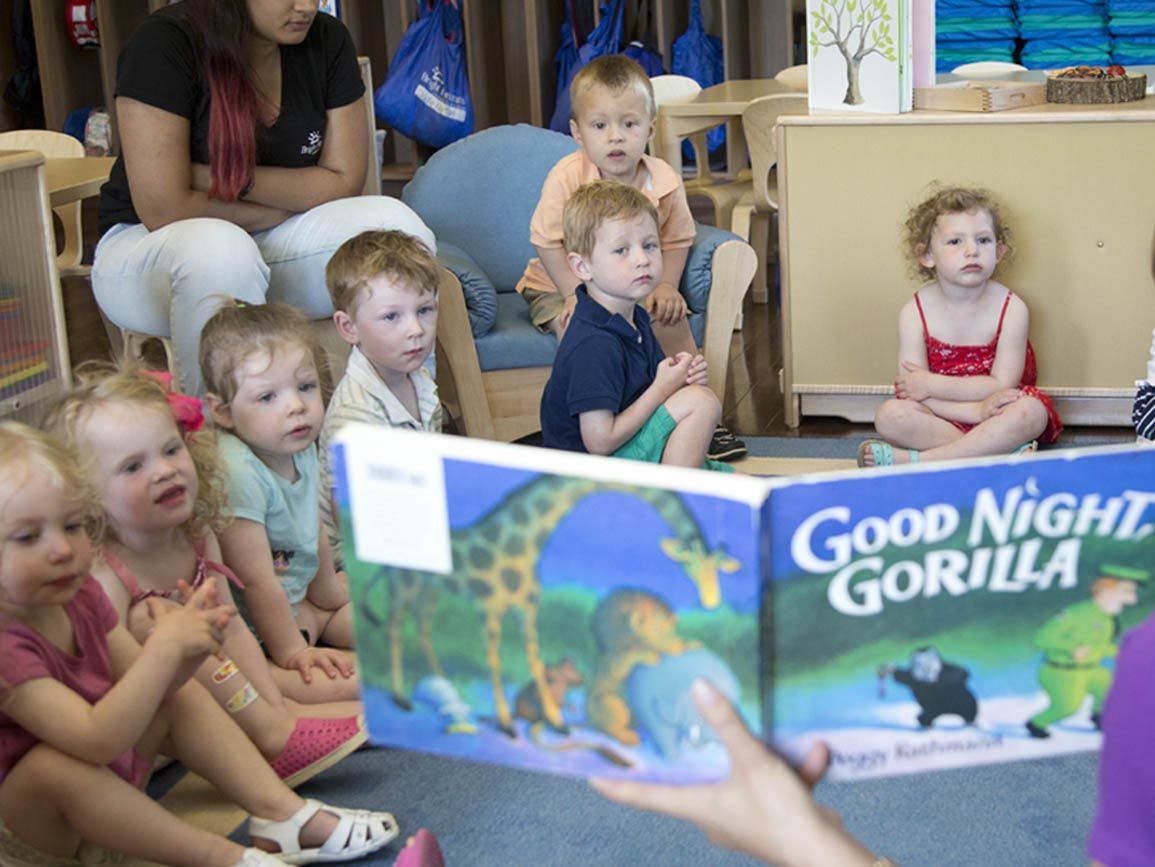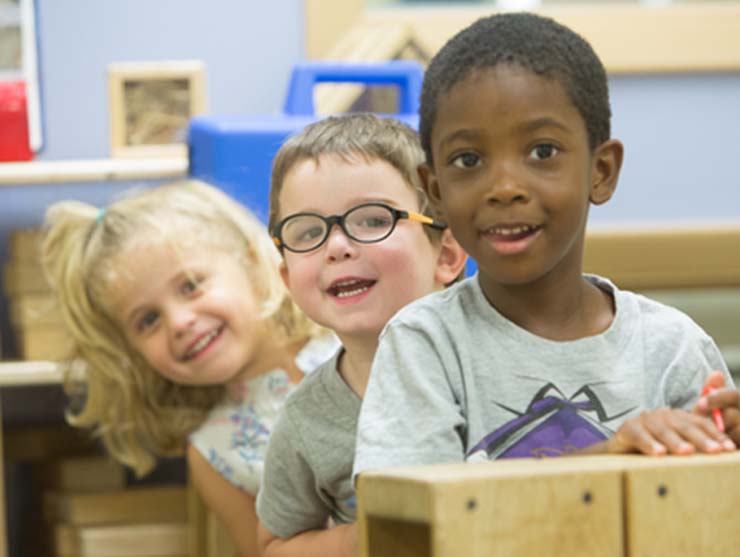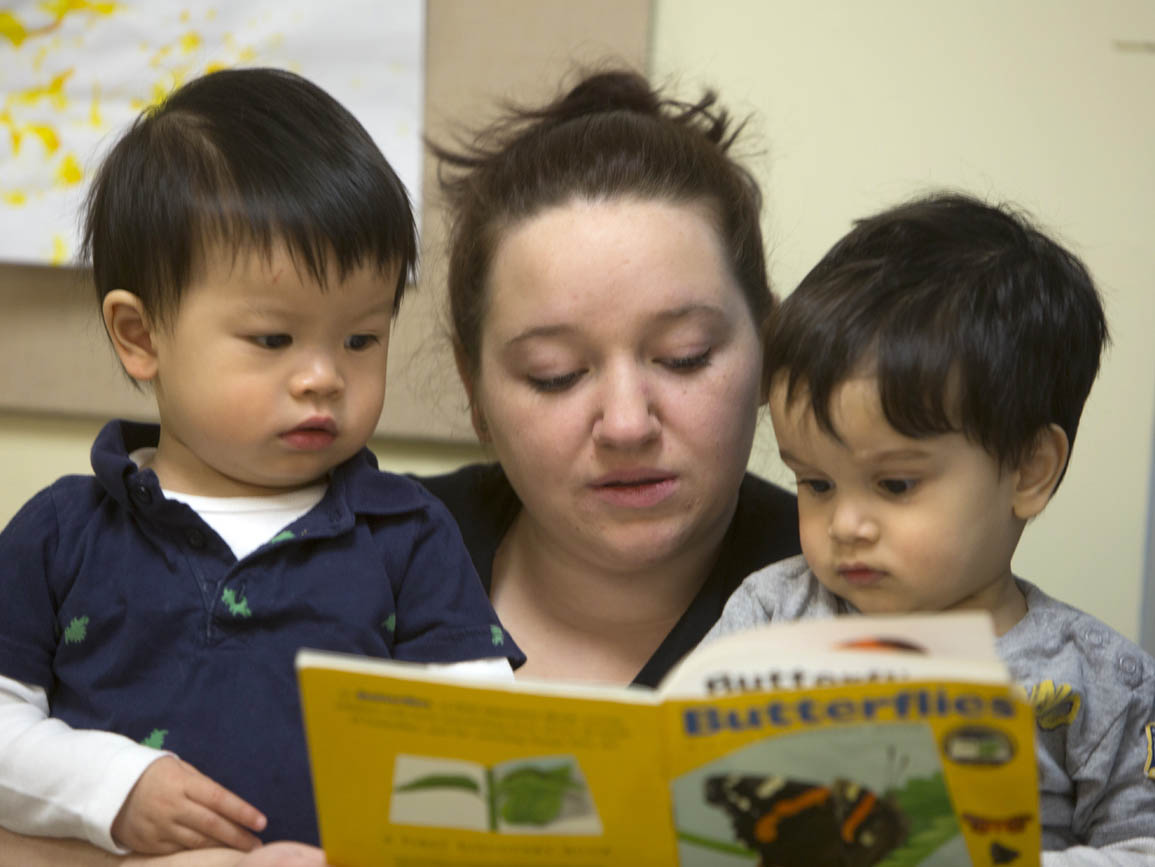Speech Development Milestones
Here are some average toddler speech and child development milestones based on the childs age:
- In the first day or two after birth, an infant can distinguish her mothers voice from another womans voice.
- Within a week or two, an infant can often distinguish her fathers voice from another mans voice.
- At 3 months, an infant can make vowel sounds.
- At 6 to 8 months, the infant has added a few consonant sounds to the vowel sounds, and may say "dada" or "mama," but does not yet attach them to individuals.
- At around a year, the infant will attach "mama" or "dada" to the right person. The infant can respond to one-step commands ("Give it to me").
- At around 15 months, the infant continues to string vowel and consonant sounds together (gibberish) but may embed real words within the gibberish. The infant may be able to say as many as 10 different words.
- At 18 months, children can usually say nouns (ball, cup), names of special people, and a few action words/phrases. Children add gestures to their speech, and may be able to follow a two-step command ("Go to the bedroom and get the toy").
- At 2 years of age, children can usually combine words, forming simple sentences like "Daddy go."
- At 3 years of age, children can generally use three to four word sentences, follow simple instructions, and often repeat words he/she overhears in conversations.
- At 4 years of age, children can generally understand most sentences, understand physical relationships (on, in, under), use four to five word sentences, can say his/her name, age, and sex, and uses pronouns. Strangers can understand the childs spoken language.
How to Encourage Speech and Language Development by Age
Childrens language development really takes off during the first two years of our childrens lives, especially as they approach their second birthday. So what can we do for them to learn to communicate more easily?
The short answer:
- Have conversations. Listen, talk; talk, listen. Talking to your baby or toddler is not "How are you doing? I am O.K. Time to go to bed." Conversation is responding to an infants sounds, smiles, spit bubbles, and gestures with words and creating the back and forth of communication.
- Read a lot. You can begin reading to babies as soon as you begin talking to them in infancy.
Birth to 2 Years
- When your child starts a conversation, give your full attention whenever possible.
- Encourage your baby to make vowel-like and consonant-vowel sounds such as "ma," "da," and "ba."
- Reinforce attempts at language development by maintaining eye contact, responding with speech, and imitating vocalizations using different patterns and emphasis. For example, raise the pitch of your voice to indicate a question.
- Imitate your infants laughter and facial expressions.
- Teach your infant to imitate your actions, including clapping your hands, throwing kisses, and playing finger games such as pat-a-cake, peek-a-boo, and the itsy-bitsy spider.
- Talk as you bathe, feed, and dress your infant. Talk about what you are doing, where you are going, what you will do when you arrive, and who and what you will see.
- Identify colors or count items out loud.
- Use gestures such as waving goodbye to help convey meaning of language and speech.
- Introduce animal sounds to associate a sound with a specific meaning: "The dog says woof-woof."
- Acknowledge the attempt to communicate.
- Limit the use of baby talk.
- Expand on single words your child uses: "Here is Mama. Mama loves you. Where is baby? Here is baby."
- Read to your child. Sometimes "reading" is simply describing the pictures in a book without following the written words, sometimes its rhyming (nursery rhymes are terrific). Choose books that are sturdy and have large colorful pictures or lots of contrast that is not too detailed. Ask your child, "Whats this?" and encourage naming and pointing to familiar objects in the book.
2 to 4 years
- Avoid the use of baby talk to develop speech and language with words.
- Use good speech that is clear and simple for your child to model.
- Repeat what your child says, indicating that you understand. Build and expand on what was said. "You want juice? I have juice. I have apple juice. Do you want apple juice?"
- Make a scrapbook of favorite or familiar things by cutting out pictures. Group them into categories, such as items to ride on, things to eat, toys to play with. Create silly pictures by mixing and matching pictures. Glue a picture of a dog behind the wheel of a car. Talk about what is wrong with the picture and ways to "fix" it. Count the number of items pictured in the book.
- Help your child understand and ask questions. Play the yes-no game. Ask questions such as "Are you a boy?" "Are you Marty?" "Can a pig fly?" Encourage your child to make up questions and try to fool you.
- Ask questions that require a choice. "Do you want an apple or an orange?" "Do you want to wear your red or blue shirt?"
- Expand their vocabulary. Name body parts, and identify what you do with them. "This is my nose. I can smell flowers, brownies, popcorn, and soap."
- Sing simple songs and recite nursery rhymes to show the rhythm and pattern of speech.
- Place familiar objects in a container. Have your child remove the object and tell you what it is called and how to use it. "This is my ball. I bounce it. I play with it."
- Use photographs of familiar people and places and retell what happened or make up a new story.
4 to 6 years
- Make sure that you have your childs attention before you speak.
- Acknowledge, encourage, and praise all attempts to speak. Show that you understand the word or phrase by fulfilling the request, if appropriate.
- Pause after speaking. This gives your child a chance to continue the conversation.
- Continue to build their vocabulary. Introduce a new word and offer its definition, or use it in a context that is easily understood. This may be done in an exaggerated, humorous manner. "I think I will drive the vehicle to the store. I am too tired to walk."
- Talk about spatial relationships (first, middle, and last; right and left) and opposites (up and down; on and off).
- Offer a description or clues, and have your child identify what you are describing: "We use it to sweep the floor" (a broom). "It is cold, sweet, and good for dessert. I like strawberry" (ice cream).
- Work on forming and explaining categories. Identify the object that does not belong in a group of similar objects: "A shoe does not belong with an apple and an orange because you cant eat it; it is not round; it is not a fruit."
- Help your child follow two- and three-step directions: "Go to your room, and bring me your book."
- Encourage your child to give directions. Follow his or her directions as he or she explains how to build a tower of blocks.
- Play games with your child such as "house." Exchange roles in the family, with you pretending to be the child. Talk about the different rooms and furnishings in the house.
- The television can also serve as a valuable tool. Talk about what the child is watching. Have him or her guess what might happen next. Talk about the characters. Are they happy or sad? Ask your child to tell you what has happened in the story. Act out a scene together, and make up a different ending.
- Take advantage of daily activities. For example, while in the kitchen, encourage your child to name the utensils needed. Discuss the foods on the menu, their color, texture, and taste. Where does the food come from? Which foods do you like? Who will clean up? Emphasize the use of prepositions by asking him or her to put the napkin on the table, in your lap, or under the spoon. Identify who the napkin belongs to: "It is my napkin." "It is Daddys." "It is Johns."
- While shopping for groceries, discuss what you will buy, how many you need, and what you will make. Discuss the size (large or small), shape (long, round, square), and weight (heavy or light) of the packages.
When should parents be concerned about our childrens speech development?
The American Academy of Pediatrics suggests consulting your pediatrician if at about 2 to 2 1/2 years:
- Your childs speech is very hard to understand.
- Your child doesnt use two-word sentences.
- Your child doesnt follow simple verbal instructions.
Keep in mind that girls usually seem to develop the ability to communicate earlier than boys, and that language can develop smoothly and continuously, or in jumps and spurts.
Because the development of speech varies, it is important not to compare your childs language development to other childrens language development. If you suspect your child is having a either receptive or expressive speech and language delays, discuss your concerns with your family physician or pediatrician. He or she may evaluate the child or refer you to professionals who specialize in speech and language therapies.
- Find tips on baby sign language from our parenting community.
- Read a moms advice to another mom for her child’s speech problems in our parent community.
- American Speech-Language-Hearing Association (ASHA) provides a great list of activities to encourage speech and language development by age group.
- Find great children’s book options and resources to continue developing a child’s speech and language skills.





